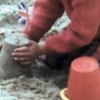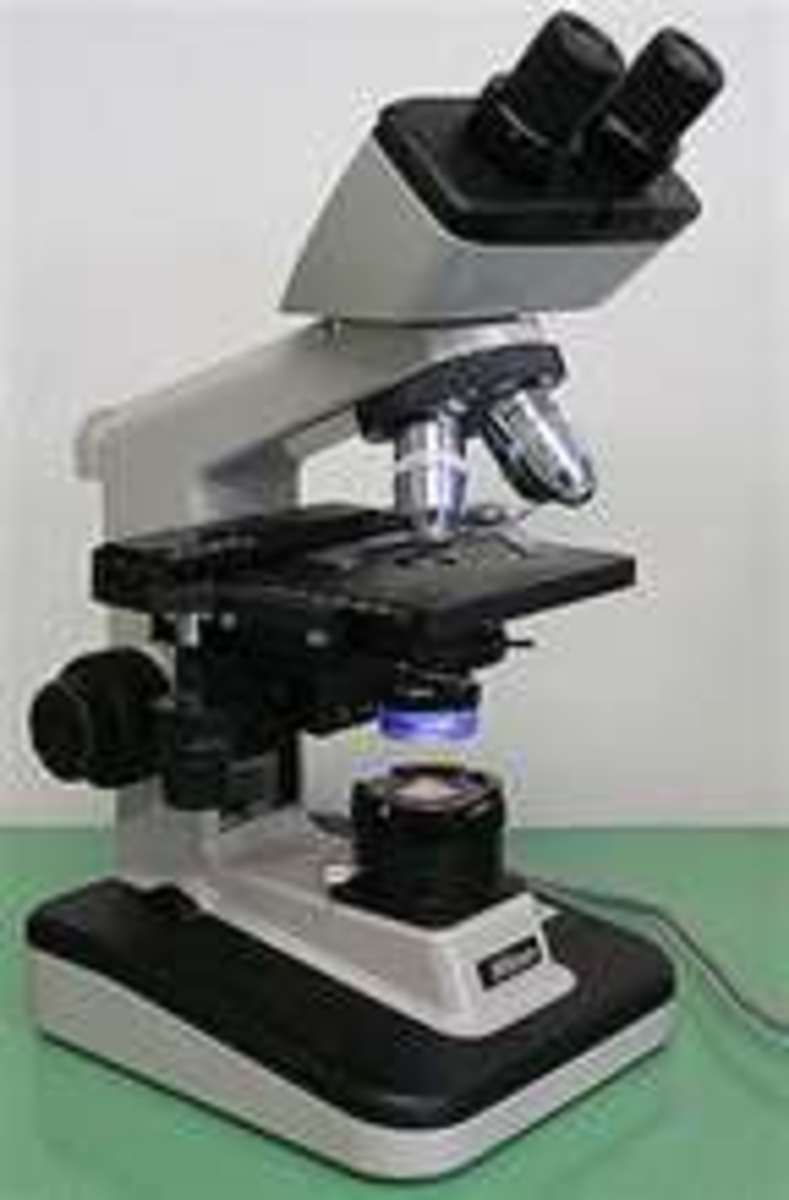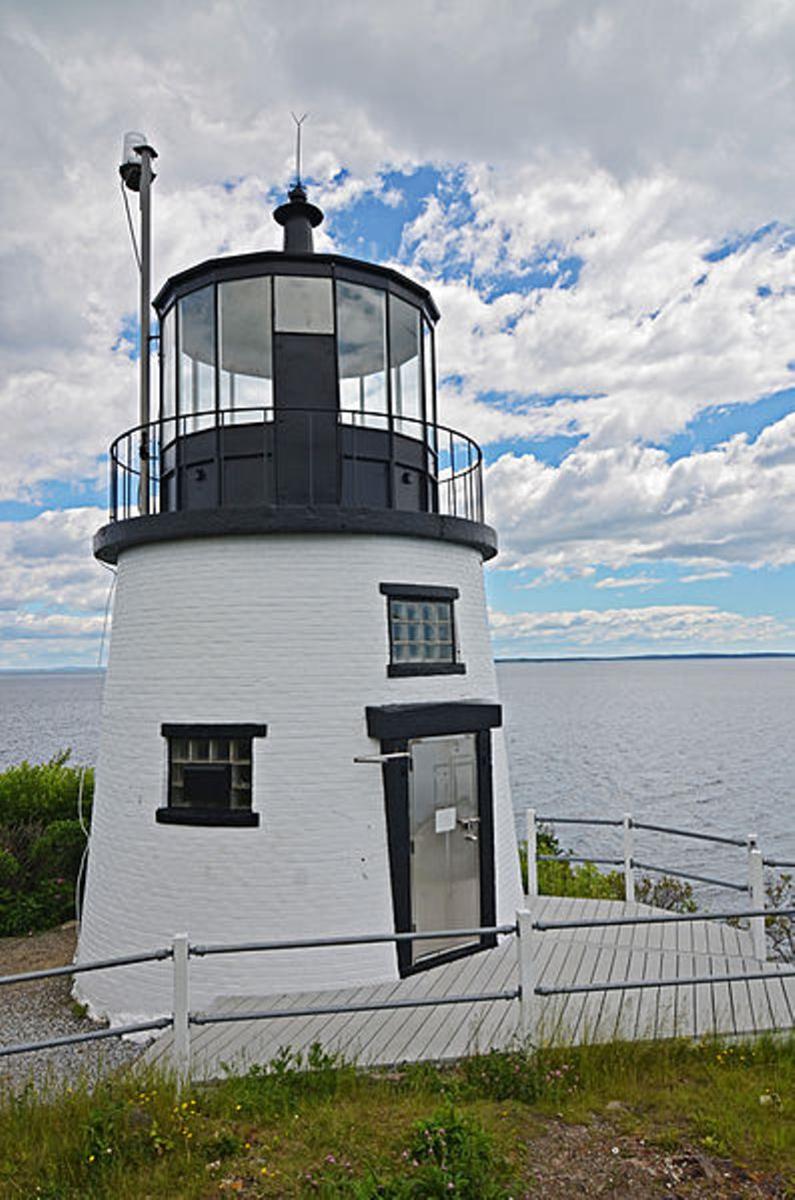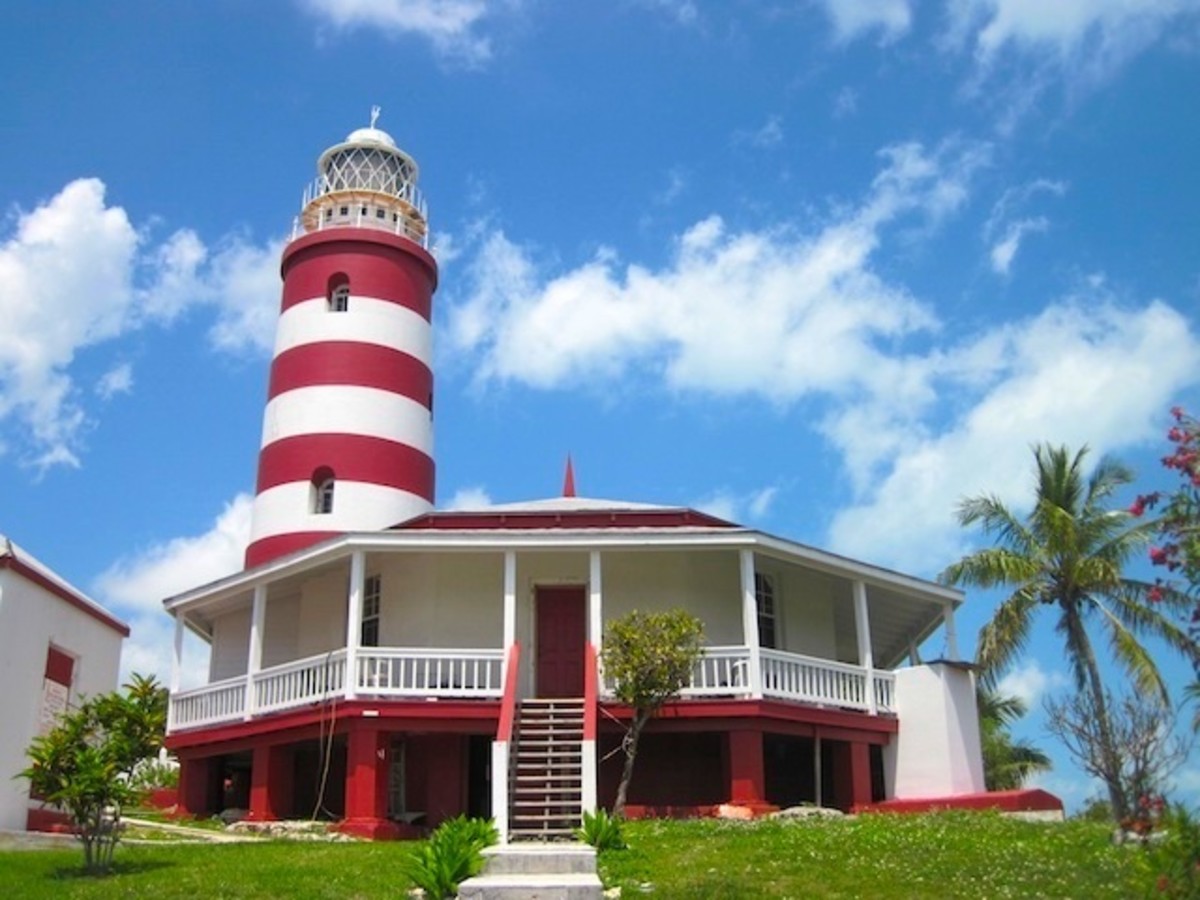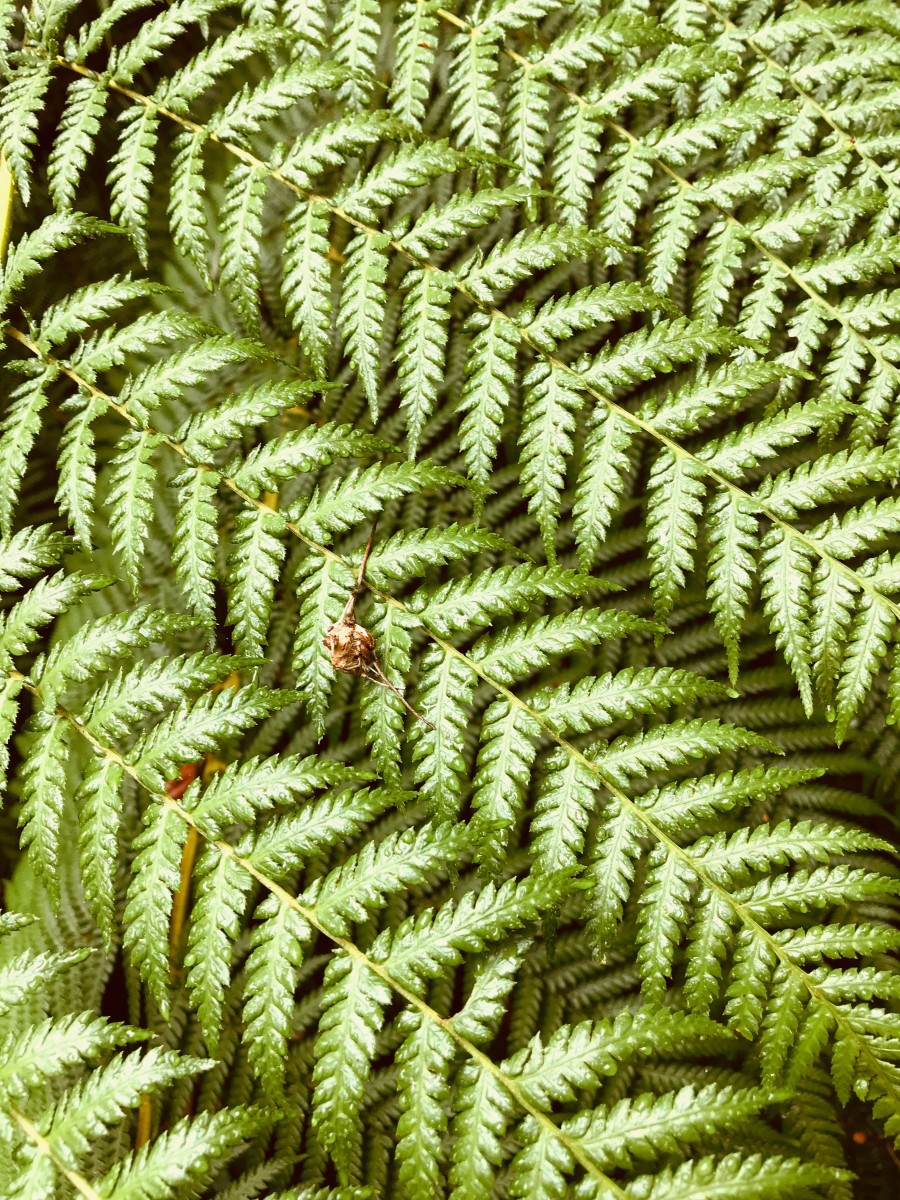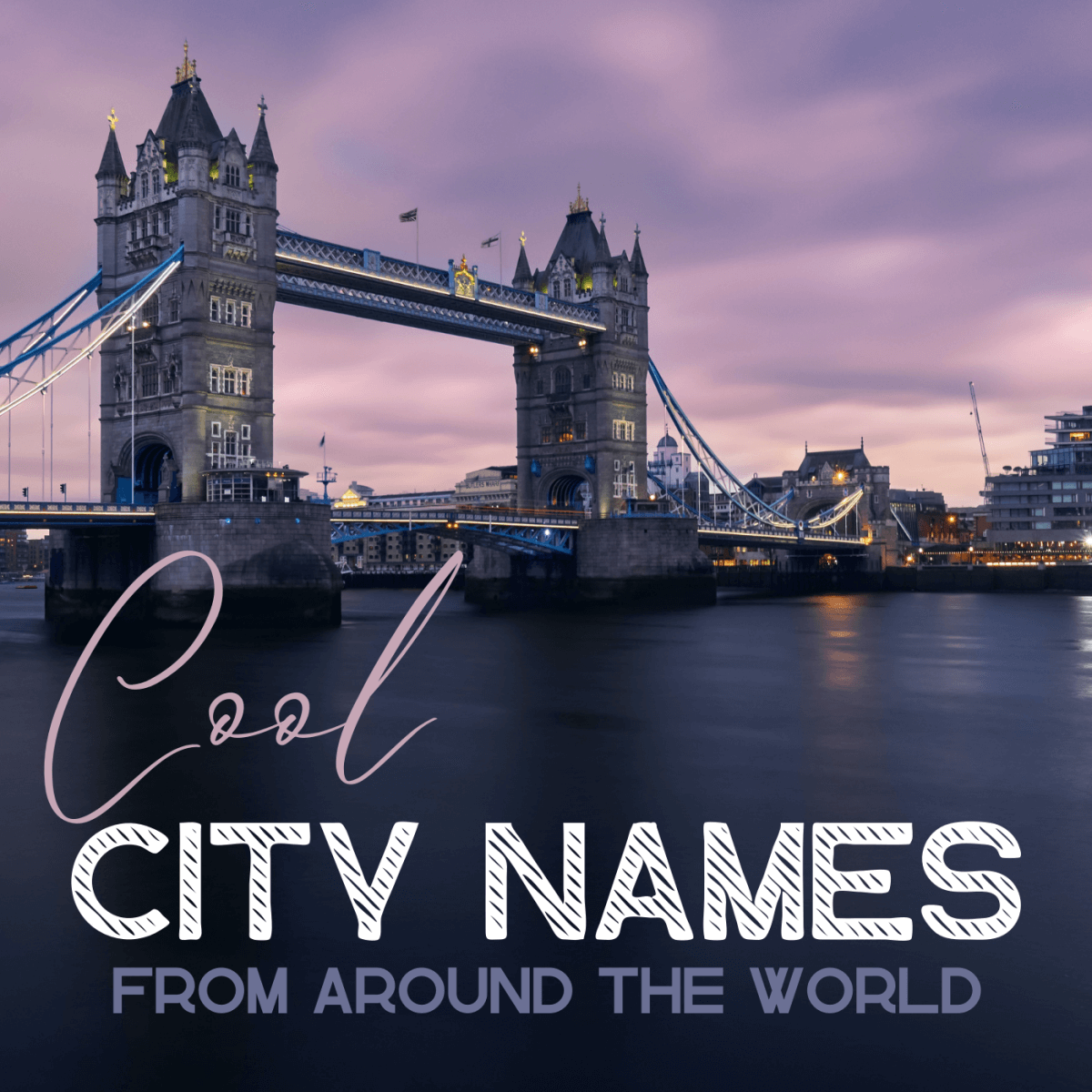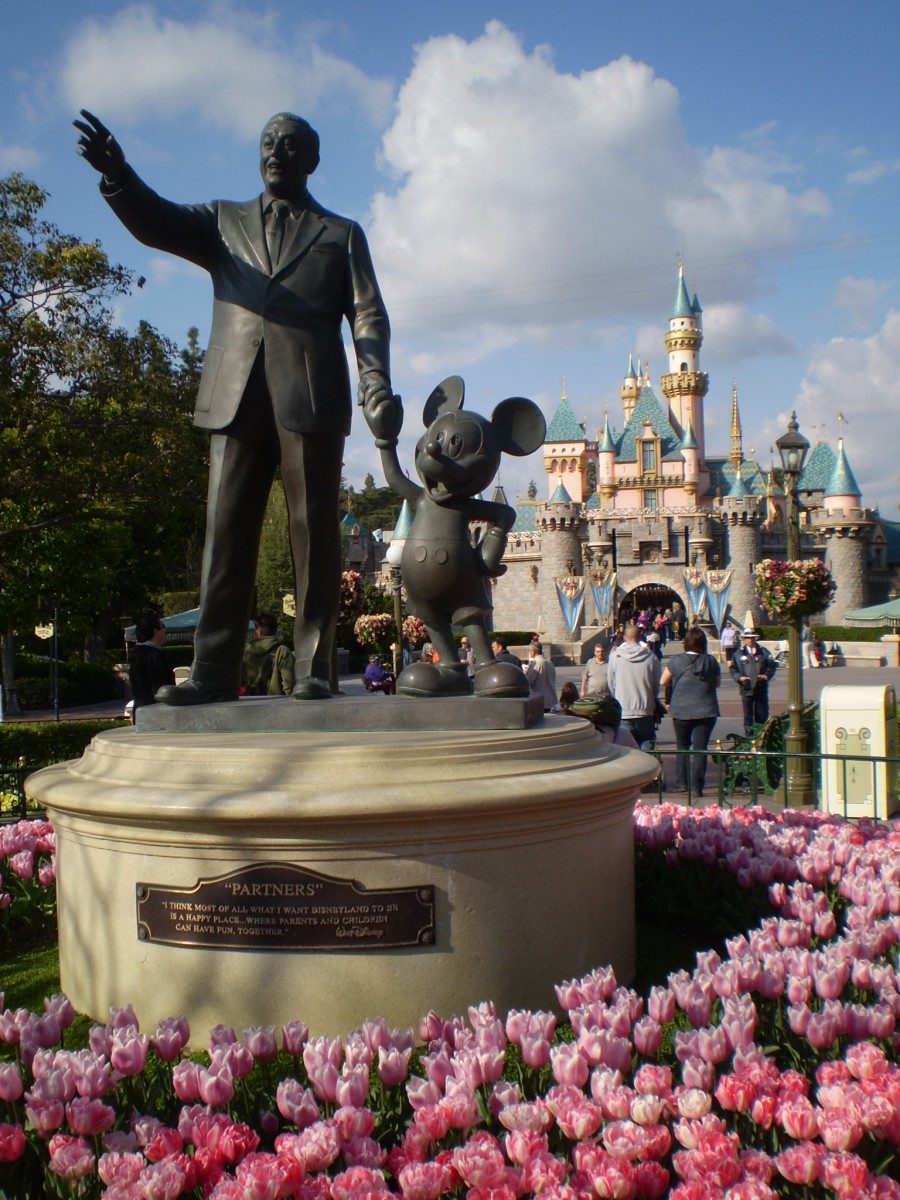Lighthouses in Cornwall
Lighthouses have been an essential part of the Cornwall landscape for hundreds of years, helping to guide shipping safely round the treacherous coastline and so, potentially, saving thousands of lives.
Over the years, lighthouses have become automated, but they're still someething that inspires us, drawing us to the edges of the island, inspiring writers and artists and presenting us with an idyllic and romantic seascape.
One famous lighthouse along the Cornish coast is Godrevy Lighthouse, that inspired Virginia Woolf to write her famous novel To The Lighthouse.
There are many buildings across Cornwall that have had a light shining in their window - often written into the lease, such as Carn Brea Castle, where they had to keep a light burning in one particular window that looked out to sea, even though it's inland by a few miles, it's high up so could be seen. It was this impromptu system of lights along the coast that enabled wreckers to carry out their trade of luring ships onto rocks so they could steal their cargo from the wreck.
Light & Horn Identification
Each lighthouse can be identified by the lights and the foghorn. Each one flashes or sounds at different speeds. This is the way that ships at sea can tell where they are - by seeing the lights, or hearing the horn, they know which lighthouse is which.
Passing ships can look up each lighthouse's frequency of flashes and sounds of the fog horn in a log book on the Captain's bridge.
There are two types of ighthouses, from a visitor's perspective, in Cornwall:
- Land based lighthouses that can be visited, or viewed.
- Lighthouses at sea on a rock, or completely inaccessible
Below these are broken down, so that lighthouses are presented first, followed by rock-based lighthouses. Both lists of lighthouses in Cornwall below are presented in chronological order:
In 1619 Sir John Killigrew erected the first lighthouse in Cornwall, at The Lizard. The locals were up in arms about this as they had benefited considerably from the wrecking of vessels and the goods they'd obtained from that.
Sir John's actions surprised everybodyy because the Killigrews were some of the fiercest and most notorious pirates ever to plague the coasts of Cornwall. In fact, a great deal of the family's wealth inherited by Sir John had come directly from piracy. It had been just 37 years earlier that an infamous female pirate, Lady Killigrew, had seized a Spanish ship sheltering in Falmouth harbour, then drowned most of the crew and taken its cargo.
Lizard Point Lighthouse, Land's End
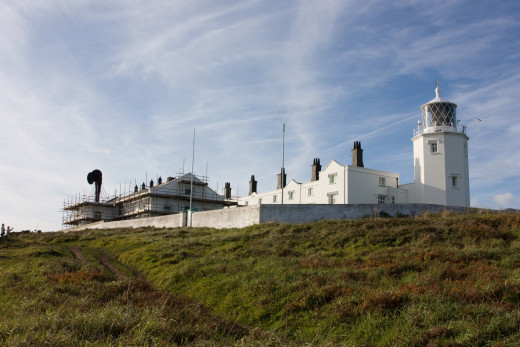
Lizard Light & Fog Horn:
The Lizard Lighthouse can be identified by:
- Light: One White Flash Every 3 Seconds.
- Fog horn: 1 Blast Every 30 Seconds.
Lizard: 1695
The Lizard lighthouse is on dry land, at Land's End, Cornwall. Since 1619 a light has been shining from this spot to guide shipping, but the tower holding that light was demolished in 1630 as it was too costly to maintain.
In 1751 the current lighthouse was built on the spot, with two adjoining cottages for lighthouse keepers and two separate towers containing lights. In 1903 one of the lights was turned off, leaving just one shining and since 1924 an electric light has been used.
The lighthouse at the Lizard was automated in 1998.
National Lighthouse Museum
In 2009 the site was redeveloped, with funds from the Heritage Lottery Fund and the engine house now houses the Lizard Lighthouse Heritage Centre, with Interactive exhibits and displays focussing on the history of the lighthouse, the life of a lighthouse keeper, and the role of lighthouses in sea safety. Visitors can climb the lighthouse tower, sound a foghorn,track local shipping, build a lighthouse, send Morse Code message,learn about semaphore and signal flags,identify the different shapes, colours and markings of buoys used to mark safe routes and listen to Lighthouse Keepers' stories and how they lived and worked on a lighthouse.
St Anthony's Lighthouse, St Anthony Head
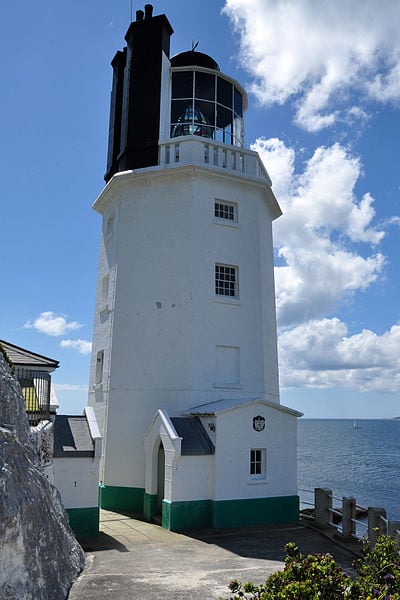
St Anthony's Light & Fog Horn:
St Anthony's Head Lighthouse can be identified from:
- Light: Once every 15 seconds, with a red sector for the Manacles rocks.
- Fog horn: The fog horn blasts once every 30 seconds.
St Anthony's: 1835
St Anthony's lighthouse is on land, at the entrance to Falmouth Harbour. When built, the St Anthony's lighthouse was lit by eight oil lamps, but by 1954 it had been converted to electricity.
Filming Location
St Anthony's Lighthouse is Fraggle Rock Lighthouse - in the popular children's TV series, St Mawes close by was also used in filming Fraggle Rock.
Trevose Head Lighthouse
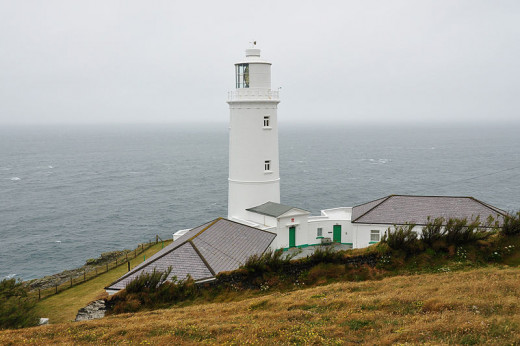
Trevose Head Light & Fog Horn
Trevose Head Lighthouse can be identified from:
- Light: One flash every 7.5 seconds.
- Fog Horn: |
Trevose Head: 1847
Built on land, Trevose Head lighthouse was built to help ships travelling to the Bristol Channel, the light was first lit on 1 December 1847. The lights were changed in 1855 and on 6 February 1913 a fog horn was started.
In 1912/13 there were updates made at the ilghthouse - and in 1920 a new form of oil lighting was installed. Trevose Head Lighthouse was automated in 1995, with the lighthouse keepers vacating on 20 December 1995.
Godrevy Lighthouse:
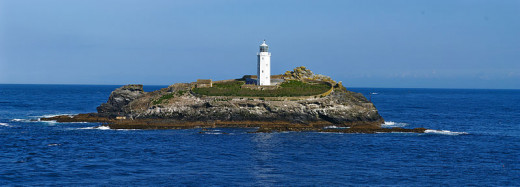
Godrevy Light & Fog Horn:
Godrevy lighthouse can be identified from:
- Light: The light flashes white/red every ten seconds, with the red sector only being visible in the arc of danger from the reef. It has a range of around 12 miles
- Fog Horn: |
- Godrevy Lighthouse
More about Godrevy Lighthouse
Godrevy: 1868
Godrevy Lighthouse inspired Virgina Woolf to write her famous novel "To the Lighthouse" in 1927. Situated just a few yards off the coast at Hayle on Godrevy Islane in St Ives Bay. Although a treacherous stretch of coastline, it wasn't until the SS Nile was wrecked on 11 November 1854 that building a lighthouse was started.
Godrevy Lighthouse has been automated since 1934.
The nearest point of land is at Gwithians, which is half owned by the National Trust - if you are quiet, this is a good spot to go seal watching as they lay on one of the tiny beaches at the bottom of the cliffs.
Pendeen Lighthouse:
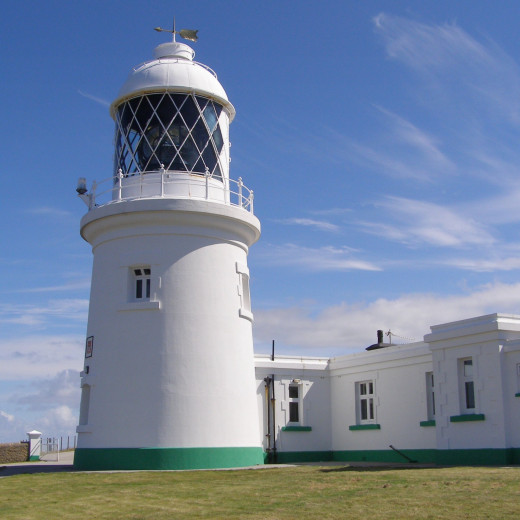
Pendeen Light & Fog Horn:
Pendeen lighthouse can be identified from:
- Light: White Group Flashing 4 Times Every 15 Seconds
- Fog Horn::Once every 20 seconds.
Pendeen Lighthouse: 1900
Pendeen Lighthouse is also called Pendeen Watch. To build this lighthouse, the whole of the headland area had to be levelled and flattened, which is why a lighthouse wasn't built at Pendeen sooner. The light was turned on 2 September 1900.
Originally powered by oil, the light was updated to electricity in 1926.
In 1995 Pendeen Lighthouse was automated; the lighthouse keepers vacated on 3 May 1995.
Pendeen Lighthouse:
Tater Du: 1965
This is the newest of Cornwall's lighthouses, being built in direct response to the sinking of Juan Ferrer on the 23rd of October 1963. It was automated from day one. Since being built the lighthouse was updated in 1996/97.
Tater Du Light and Fog Horn Identification:
- The light is 3 white lights flashed every 15 seconds, with a red fixed light that shows in the line over Runnelstone Rock.
- The fog horn is an electric emitter, with two one second blasts every 30 seconds during fog.
Peninnis Head: 1680
Built on the island of St Agnes in the Scilly Isles, 26 miles off the coast of Cornwall, in 1680, the first lighthouse was replaced in 1911 with the current metal tower. Powered by gas in the early years, it was converted to electricity in 1992.
Peninnis Head Light and Fog Horn Identification:
- White Flash Every 20 Seconds.
Eddystone: 1696
The Eddystone Lighthouse is 9 miles south of the Cornish coast. The first two lighthouses were washed away in storms and the third was removed - it currently stands on dry land in Plymouth. The current lighthouse is the fourth structure.
The original Eddystone lighthouse was a wooden structure, erected in 1696, with the light first being lit on 14 November 1696, this first structure was altered the following year to include more robust building materials. It was finally washed away during the great storm of 27 November 1703. Henry Winstanley, the original engineer who built the lighthouse was working on site at the time and was never seen again.
To pay for this lighthouse, ships passing were charged one penny per ton.
By 1708 the second lighthouse had started to take shape, being finished in 1709, This one lasted until 2 December 1755, when the lantern caught fire - the lantern at the time was lit by candles. One of the lighthouse keepers who was rescued from the fire was aged 94.
The third structure on the rock was Smeaton's Lighthouse - now a monument at Plymouth, Devon. Building commenced in 1756 and the light was first lit on 16 October 1759. This lighthouse lasted until 1877, when the rocks beneath it were eroding, so it was removed.
The current Eddystone lighthouse was lit in 1882. Since 1982 the light has been automated.
Eddystone Light and Fog Horn Identification:
- Light: White group flashing twice every 10 seconds.
- Fog Horn: One blast every 30 seconds
Longships: 1795
Built in 1795, the Longships lighthouse is on a rock out at sea. A replacement to the original lighthouse was built in 1869 and was lit in December 1873. In 1898, even though it was a clear night, a ship nearly demolished the ilghthouse.
Longships lighthouse has been unmanned since 1988.
Longships Light and Fog Horn Identification:
- Light: One long five-second flash every ten seconds. The flashes are white when seen from seaward, but red sectors show if a vessel strays too close to land.
- Fog Horn: Once every ten seconds..
Wolf Rock: 1791
Situated four miles south west of Land's End on a rock, Wolf Rock lighthouse was built in 1791. The original lighthouse was privately funded and a marker (not a lighthouse) was constructed by 1795. It wasn't long before the sea claimed this first attempt.
Between 1836-1840 an iron beacon was situated on the rock. The current tower commenced work in 1861, but the sea there is so treacherous there are few days of the year when work can be done, so it wasn't until 19 July 1869 that it was finished, with the oil light being turned on in 1870.
Wolf Rock Lighthouse was converted to electricity In 1955 and in July 1988 it was automated and the lighthouse keepers vacated.
Wolf Rock Light and Fog Horn Identification:
- Light: |
- Fog Horn: |
Bishop Rock: 1847
Building started in 1847, with the lighthouse being situated on an isolated rock South West of the Scilly Isles. It opened in 1847. The Guinness Book of Records have Bishop Rock listed as the world's smallest island with a building on it.
Bishop Rock is uninhabited. The first lighthouse that was built there was washed away before they'd completed it, they finally finished the current lighthouse in 1858 and the light was turned on for the first time on 1 September 1858. In 1860 a huge storm swept away the bell, and local divers say there is a bell to be seen around the base of the rocks. Another storm in 1874 caused further damage, leading to some strengthening work being undertaken in 1882.
The lighthouse used oil to power the lights until 1973. This lighthouse was automated in 1991, with the last lighthouse keepers vacating in 1992.
Bishop Rock has a rooftop helipad, installed in 1976.
It is said that in the 13th century, prisoners might be left on Bishop Rock with bread and water, to wait for the sea to carry them away.
Bishop Rock is the marker for the start and end point for crossing the Atlantic.
Bishop Rock Light and Fog Horn Identification:
- Light: |
- Fog Horn: |
Round Island: 1887
One of three lighthouses on the Isles of Scilly, Round Island lighthouse was built in 1887 and updated in 1966. It was automated in 1987. The island that the lighthouse is built on is a designated Site of Special Scientific Interest (SSSI), so the only time anybody is allowed to go there is for lighthouse maintenace.
Round Island Light and Fog Horn Identification:
- Light: One white flash every ten seconds,
- Fog Horn: Four blasts every minute.
